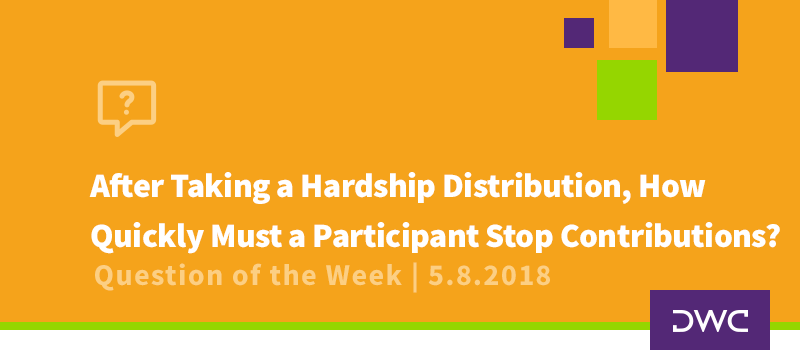Facts
I am fed up with sponsoring my current retirement plan. My wife and I contribute the maximum amount we can in deferrals each year. Due to low participation by our employees, we fail ADP testing every year and have to take refunds.
Question
What is the point of continually being proactive about retirement when I am forced take a portion of it back each year? I there anything that we can do to avoid failing nondiscrimination testing each year?
Answer
We can definitely understand the frustration. The good news is that there are a couple options that might help.
Option 1: Prior Year Testing Method
As you probably know all too well, the ADP test compares the average deferral rate of the highly compensated employees to that of the non-HCEs. Generally speaking, if the HCE average is more than two (2) percentage points greater than the non-HCE average the test fails.
Rather than performing that comparison on a current year basis, the rules allow you to set the maximum contribution rate for the HCE group based on the average deferral rate for the non-HCEs in the immediately preceding year. You still have to go through the testing process and the same limits apply, but by using this prior year method, you know ahead of time what your limit is and can reduce contributions accordingly to avoid getting refunds after the fact.
Switching to the prior year testing method requires a formal plan amendment that must be adopted no later than the end of the year for which you want to make the change.
Option 2: Safe Harbor 401(k) Plan
While the prior year testing method only makes the test results more predictable ahead of time, adding a safe harbor provision to your plan can eliminate the ADP test requirement altogether. The trade-off is that you must agree to make a minimum level of contribution for your employees. You have two general options:
- A matching contribution equal to 100% of the first 3% deferred by each participant plus 50% of the next 2% deferred.
- A profit-sharing-type contribution (referred to as a nonelective contribution) equal to 3% of pay for each person who is eligible for the plan.
With the match, the maximum contribution you make for your employees is 4% of pay, but it only goes to those who contribute to the plan from their paychecks. The nonelective option is only capped at 3% of pay but must be made on behalf of each employee who is eligible for the plan, regardless of whether they contribute for themselves. Both types of contributions must be immediately vested.
Since your employees are not contributing very much as it is, the matching contribution might provide the greatest cost/benefit. However, we have seen situations in which the match incentivizes employees to contribute more, making the nonelective options more cost-effective in the long run.
Also, depending on your demographics, using the 3% nonelective safe harbor may allow you to make additional profit sharing contributions just for you and/or your wife without triggering any additional contribution requirements for the employees. This is referred to as a new comparability profit sharing allocation. That design requires a certain demographic balance to work, but in the right situation it can be a really effective way for you to increase the amount you can save.
If this of interest, just give us a call or send us an email. We can review the demographics with you and help translate these concepts into actual numbers to help you determine what makes sense for you.
For for information on nondiscrimination testing, please visit our Knowledge Center here.
Want a printable version of this article? Click here.




















